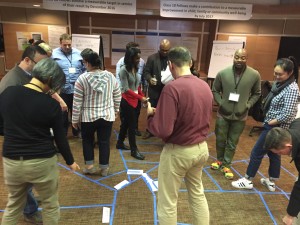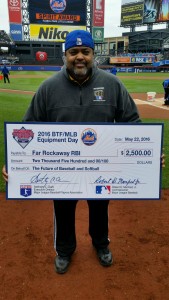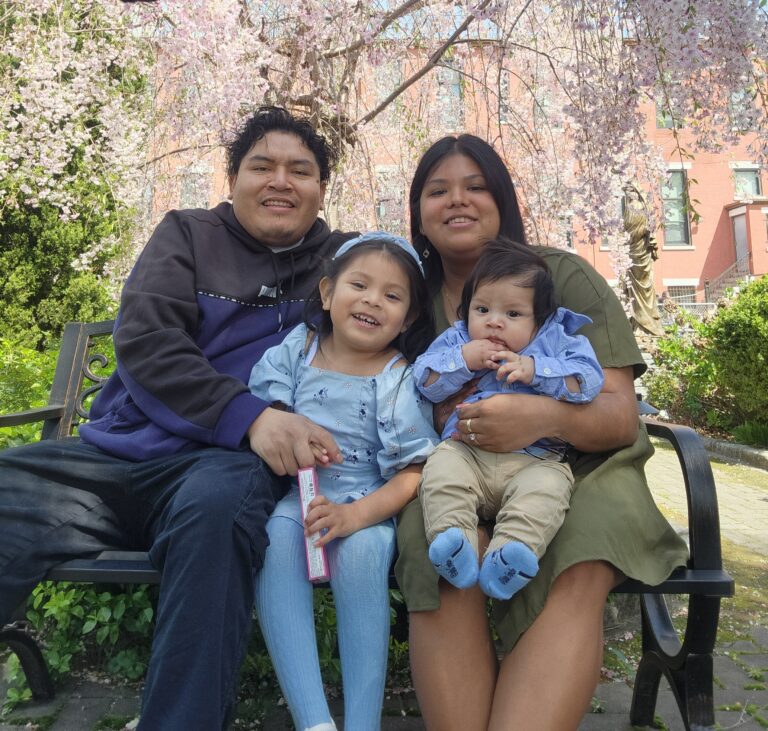 It is a great honor to be a part of The Annie E. Casey Foundation Children and Family Fellowship, a results-oriented executive leadership development program that asks—and expects—fellows to make a major contribution to the broader population within 16 months. This class of fellows is made up of 16 community leaders who hail from all over the country and from various sectors including housing, juvenile justice, legal advocacy, child welfare, youth development, and more—serving the common goal of reducing poverty. In April, I had the pleasure of attending the first weeklong meeting of the fellows in Baltimore. I left confident that The Child Center of NY is well-poised to face the most pressing community issues head-on and reach real, meaningful solutions to the overarching problem of poverty.
It is a great honor to be a part of The Annie E. Casey Foundation Children and Family Fellowship, a results-oriented executive leadership development program that asks—and expects—fellows to make a major contribution to the broader population within 16 months. This class of fellows is made up of 16 community leaders who hail from all over the country and from various sectors including housing, juvenile justice, legal advocacy, child welfare, youth development, and more—serving the common goal of reducing poverty. In April, I had the pleasure of attending the first weeklong meeting of the fellows in Baltimore. I left confident that The Child Center of NY is well-poised to face the most pressing community issues head-on and reach real, meaningful solutions to the overarching problem of poverty.
We began this 16-month experience by searching for the “I” in the “we”—identifying what roles we each play in this process and in our communities. Coming together and working with this group intimately to understand and assume strategies of being an effective, efficient leader pushed me out of my personal comfort zone. Breaking into smaller cohorts of four, we reflected on ourselves as individuals, our histories, and what brought us into the field. Many who work to improve the lives of others have overcome challenges of their own, yet they don’t often think about how those challenges shaped who they are today. But when you explore your past with three other people, they begin to know more about you than you know about yourself and can offer a new perspective on your current challenges.
I began to think about how digging deep to get to the truth—even if it makes us uncomfortable—can lead to revelations that provide direction and spur growth. That made me wonder: How can this concept work on the organizational and societal level? The answer, as it almost always does, lies with the facts.
Because the fellowship focuses on results-based leadership, we spent a lot of time examining data. Regardless of our differing sectors, the data kept bringing us all back to the same issues—employment, education, income, neighborhood safety, socioeconomic status. We kept coming back to this: You will do better in life if you make more money. That is the plain, uncomfortable truth. I looked at poverty trends and saw how poverty leads to a pipeline of incarceration and negatively impacts communities.
This wasn’t news to me, but when we disaggregated the data, the great ethnic disparities in society became clear and really moved me. The Casey Foundation is big on disaggregating data like this, and I can see why. Indicators of poverty may be masked if we overlook information from subpopulations.

One of the ways blog author Deepmalya Ghosh is moving the needle for youth–through Far Rockaway RBI, a joint initiative with Major League Baseball.
For example, high school graduation rates in New York City have been trending upward—significantly—in the last few years. But looking at the graduation rates by ethnicity, it becomes clear that among black and Latino populations, rates are actually on a downward trend. It would be nice to believe that the overall upward trend means we are on the right track and can continue with the status quo; but it won’t help to solve the underlying problems.
Looking closely at this disaggregated data is important because it can inform where we at The Child Center apply our efforts. Because the high school graduation rate for black and Latino populations in Queens is sorely lagging behind, we have to review our youth development programs at schools with a high concentration of these populations to determine how many students access our services and what efforts we can undertake to better support them. In fact, there are some school districts in the borough where the disparity is unacceptable.
Are we moving the needle? I want to drill into the data to find out. With the leadership of The Child Center’s CEO, Traci Donnelly, I am hopeful that what I learn from the fellowship will help us transform the work we do. Traci has been a true champion of change, and she will join me as my data partner when I return for the next meeting in June.
They remind us in the fellowship that we can’t do this alone, and I am looking forward to working with my own team in youth development and the other divisions at The Child Center—behavioral health, prevention and family support, and early childhood education—toward a common focus, always using data to inform our practice, even if that may lead to some uncomfortable conclusions and decisions. The skills I gain will help me lead the people I supervise, and, equally important, collaborate with my colleagues and those I report to. And making change requires us to do more than work within The Child Center; as an agency we also have to engage schools, the community, and stakeholders like churches, partner organizations, and elected officials to join together all sectors to help move the needle.
Meeting for one week with fellows from all over the country who are so committed to their work was incredible. This program has me working with some of our nation’s top leaders from places I’ve never been but who share a common drive and goal. After returning to New York, I reached out to my cohort almost immediately when I felt a bit stuck. We are a new family; we push and support each other. The fact that I get to continue this endeavor for many more months is an unbelievable opportunity, which I am excited to pay forward.
Deepmalya Ghosh
Associate Executive Director, Youth Development and Community Engagement





